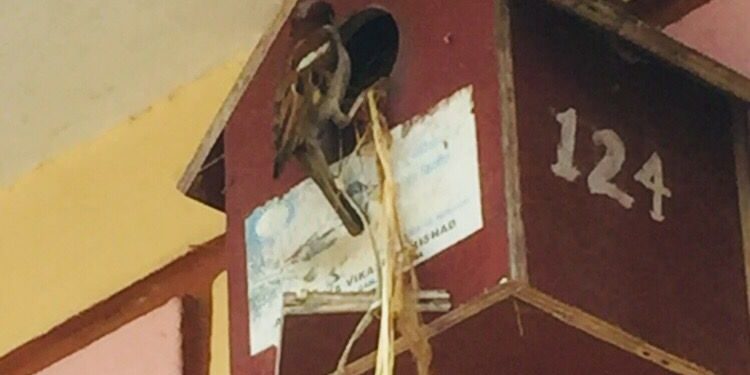Berhampur: The sparrow is one of the first birds that come to mind from our childhood days. There was a time when people would wake up from their sleep to the chirping of these birds in the Silk City and in villages on the outskirts of this town. Sparrows could be found in most places including even in residential abodes. Sparrows eat all types of food grains and worms; so it is easy for them to survive in any condition. However, in recent times the population of sparrows is declining rapidly in Ganjam district. Many experts are of the opinion that if this continues, sparrows may well become extinct in the near future.
To raise awareness and protect the house sparrows, ‘World Sparrow Day’ is observed every year March 20. Environmentalists and bird lovers have pointed out that the sparrow population has almost been halved in Odisha since the Super Cyclone in 1999. The house sparrow is included in the IUCN red list due to remarkable decrease in its population during the last 25 years. The modern lifestyle and the development of concrete jungles have led to a rapid decline in the number of sparrows. Also, climate change and the general warming of the planet earth is affecting the sparrow population. Sparrows usually build their nests with straws and twigs preferably in houses made of mud. However, with cement replacing mud even in village houses, the sparrows are not finding any place to breed. This has resulted in a sharp decline in the house sparrow population.
However, there is some hope for this species with a number of voluntary outfits coming to its aid. Sparrow population has substantially increased in Dharmanagar, Gunthabandha, Biribadia, Baghajhari, Lanjia, and Balakrushnapur areas in Kukudakhandi block of Ganjam district due to the efforts of these organisations. Local outfit ‘Anchalik Vikash Parishad’ was the first to launch efforts for the protection of house sparrows in Gunthabandha village in 2011. The outfit first brought two house sparrows and set up artificial nests with clay pots. Since then the population has grown and now more than 300 sparrows can be found in the village. Villagers also contributed by providing the sparrows with food and water and above all temperatures that the birds preferred. Padmabati Samal, a resident of Gunthabandha village said that before the Super Cyclone, a large number of sparrows could be seen in the village. However, they disappeared with the climatic disaster.
Now, however, she is happy as the cacophony of the birds has returned. Another resident, Rajalakshmi Mohanty informed that her residence has a nest for the house sparrow where some chicks have recently been born. When contacted, Sagar Kumar Patra, president, and Bijendra Majhi, secretary of ‘Anchalik Vikash Parishad’ said that the house sparrows are now constructing their own nests and their population is increasing. “Initially we had to build nests for the birds. Now, however, the birds themselves are building the nests. It proves that their population is increasing,” both said. They added that in the future steps will be taken for the protection of the sparrows.






































